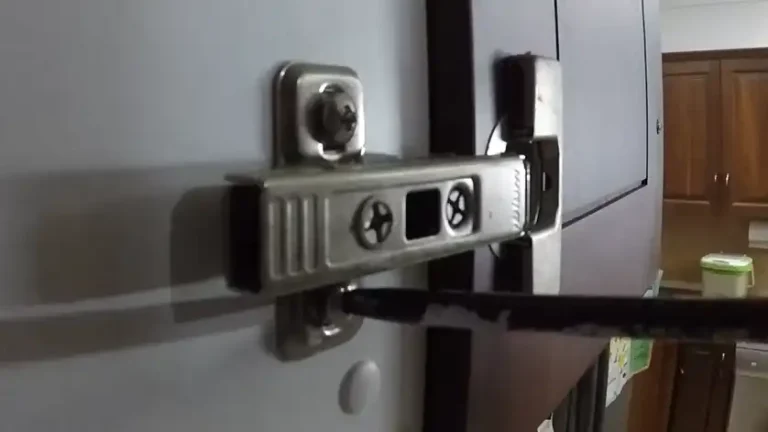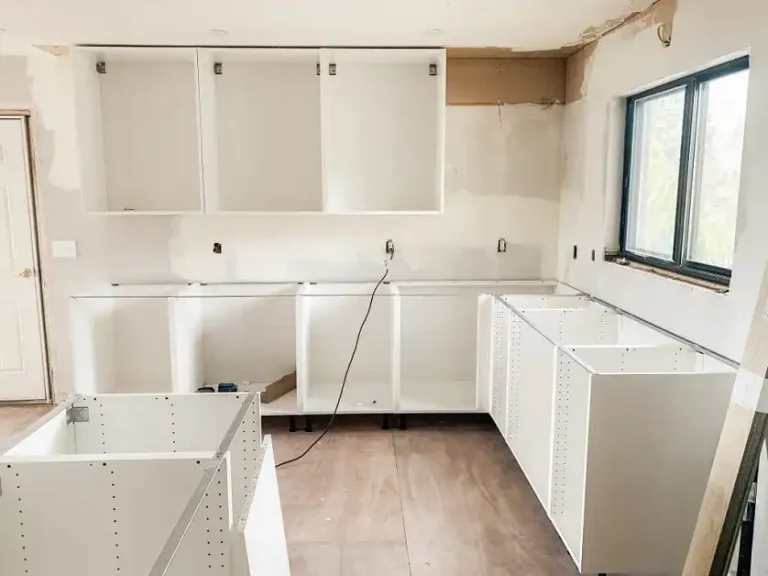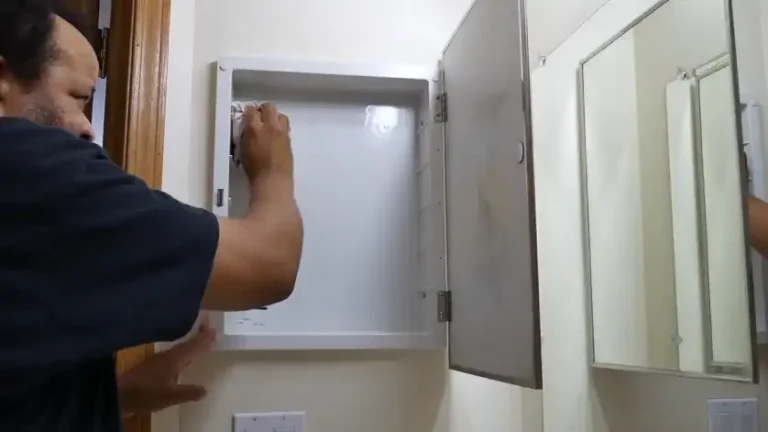How to Open Child-Proof Cabinets? Step-by-Step Guide
As parents or caregivers, ensuring our homes are safe for young children is a top priority. One crucial aspect of childproofing is securing cabinets and drawers that may contain hazardous items like cleaning supplies, medications, or sharp objects. While childproof cabinet locks can be frustrating for adults to navigate, they serve a vital purpose in preventing accidents and keeping little ones out of harm’s way.
In this article, we’ll explore various types of childproof cabinet locks and provide step-by-step instructions on how to open them safely and effectively. Let’s start.
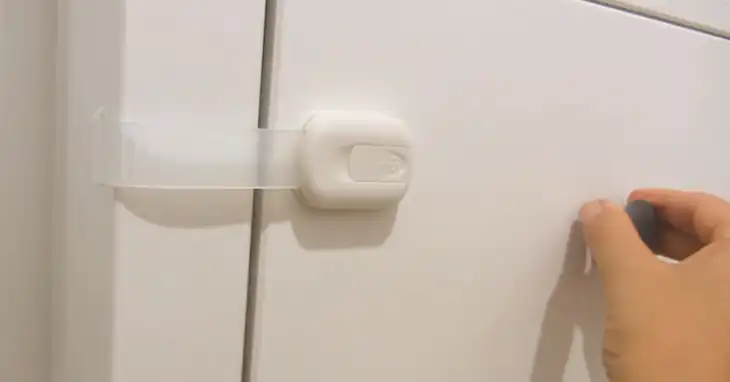
How to Open Different Types of Child-Proof Locks?
Magnetic Locks
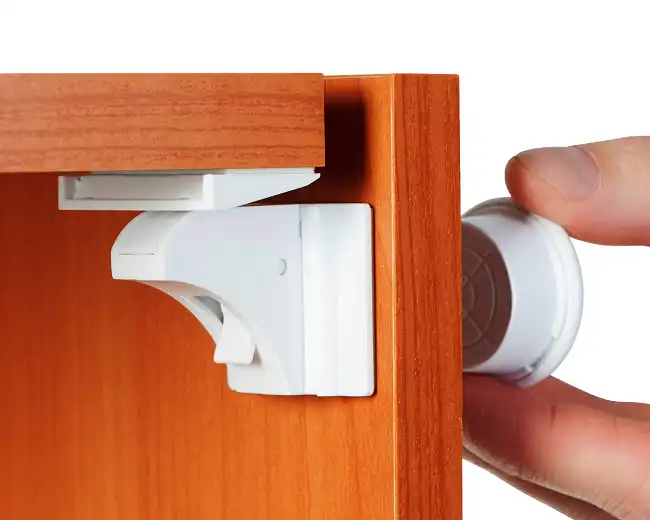
Locate the magnetic key, a small, flat magnet that holds the secret to unlocking these ingenious locks. Often, you’ll find a subtle indentation or marking indicating the engagement point on the lock itself. Grasp the magnetic key firmly, bringing it close to the designated spot. As the magnetic force connects, you’ll feel the lock’s resistance surrender, allowing the cabinet door to glide open with ease.
Pinch Strip Locks
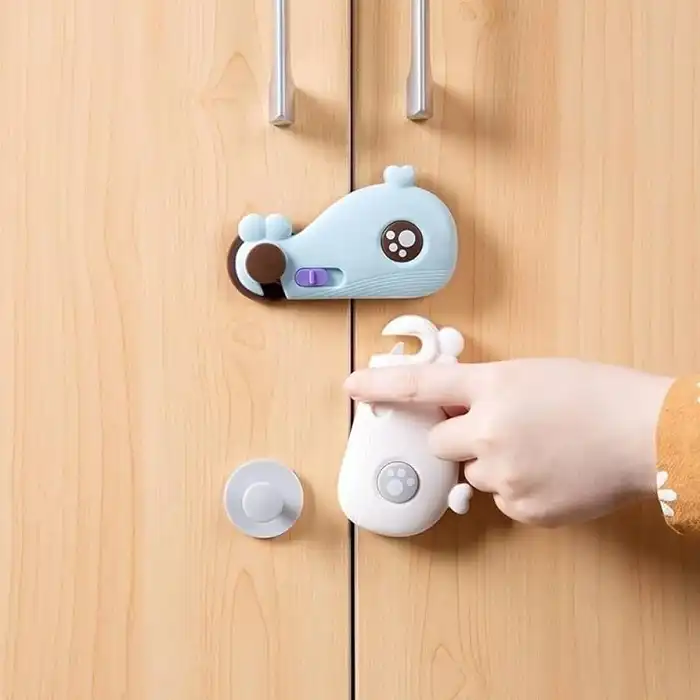
Your eyes are drawn to the protruding lever or strip, beckoning you to engage with the pinch strip lock. Prepare to apply pressure, grasping the strip with one or two hands as needed. Squeeze inward with firm determination, or if a sliding mechanism is present, maintain the pinching motion while sliding the lever simultaneously. As the lock releases its grip, the cabinet door becomes accessible, ready to unveil its contents.
Rotary Knob Locks
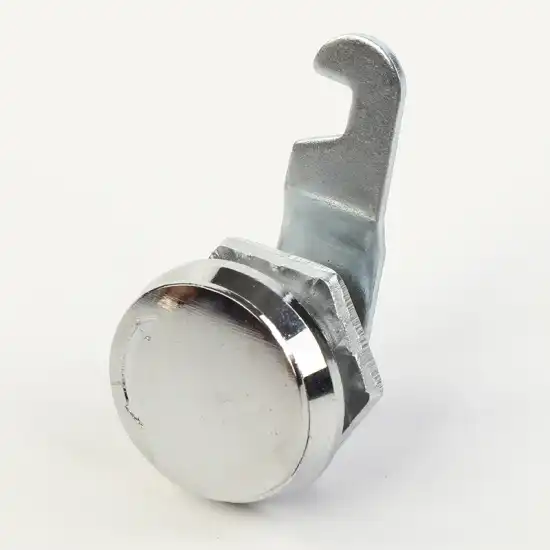
Seek out the rotary knob, a cylindrical protrusion that holds the key to unlocking this clever contraption. Depending on the lock’s design, you may need to press the knob downward or inward while turning, following the manufacturer’s instructions precisely. Apply firm, steady pressure and rotate the knob in the specified direction. With a satisfying click or release, the lock disengages, granting you access to the cabinet’s treasures.
Strap or Toggle Locks
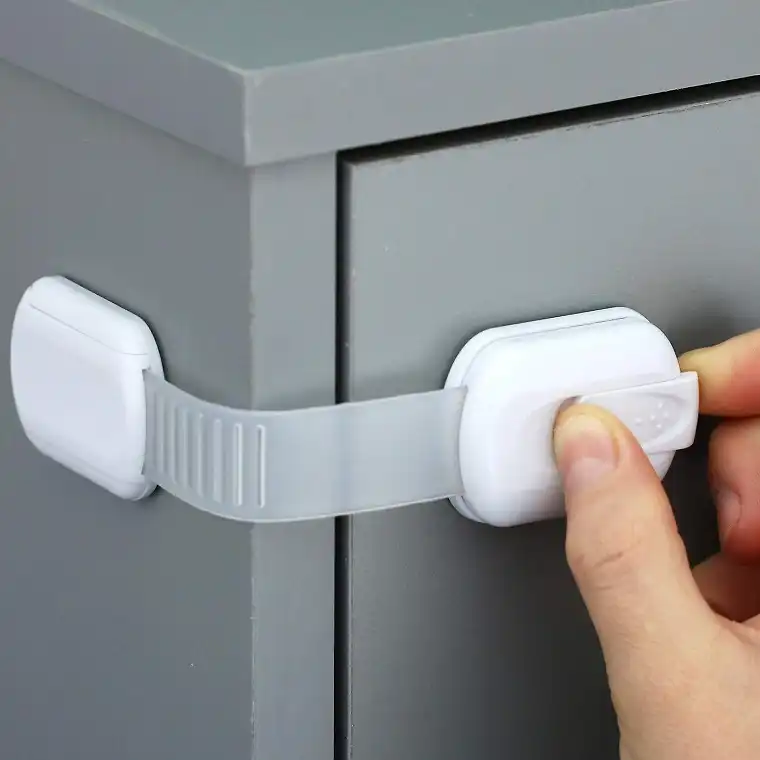
Locate the release button or lever, often hidden in plain sight on the cabinet door or frame. Depress this mechanism with purposeful force, feeling the resistance give way beneath your fingertips. Simultaneously, grasp the strap or toggle and pull or lift with confidence. As the lock surrenders, the cabinet door becomes unhinged, ready to reveal its contents.
Double Sided Locks (adult access from inside)
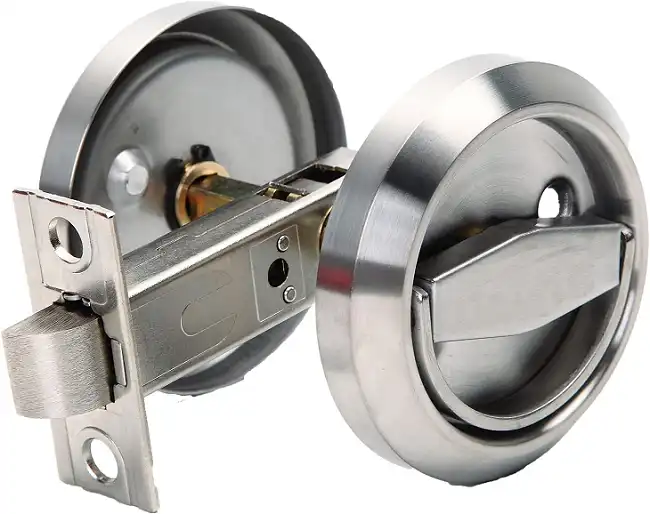
Carefully open the cabinet door just enough to gain access to the interior release mechanism. Consult the lock’s manual for specific guidance, as each design holds its own secrets. You may need to turn a knob, depress a lever, or even employ a specialized tool as instructed by the manufacturer. With the correct motions, the lock will disengage from the inside, allowing you to fully open the cabinet door and access its contents.
U-shaped Childproof Locks
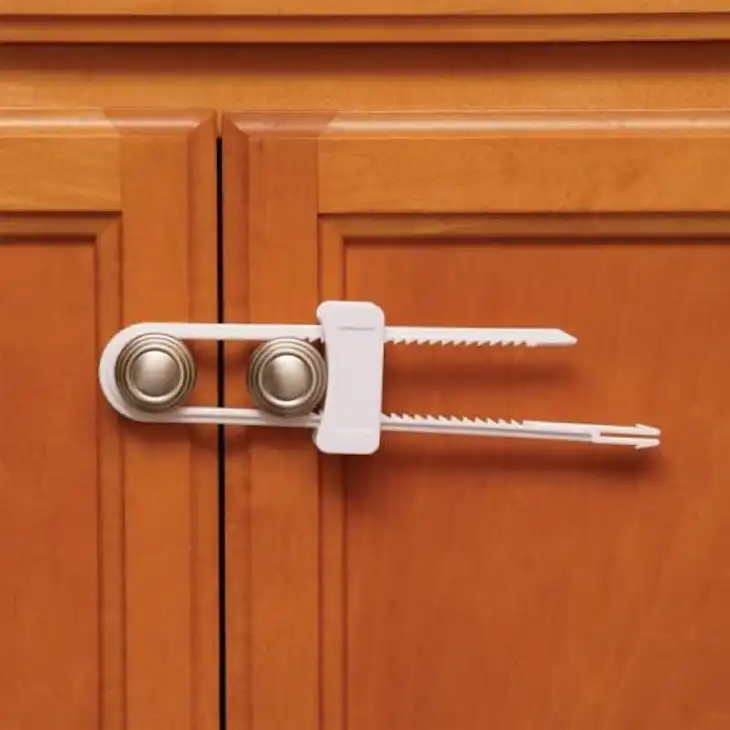
Study the lock’s instructions diligently, for the key to unlocking this intricate design lies in the precise alignment of its U-shaped form. Grasp the U-shape firmly, feeling the contours in your hands. Seek out the designated slot or opening on the cabinet door or frame, and with careful maneuvering, align and insert the U-shape into its intended resting place. When the alignment is true, the lock will release its hold, granting you access to the cabinet’s contents.
Remember, patience and attentiveness are virtues when navigating these childproof locks. Should you encounter any difficulties or uncertainties, do not hesitate to consult the lock’s manual or seek guidance from a professional to ensure the safety of you and your little ones.
Safety Precautions
It’s crucial to remember that childproof cabinet locks are designed to keep little ones safe, and any methods for opening them should be used solely for legitimate adult access.
Never teach children how to bypass these locks, as this defeats their purpose and could lead to dangerous situations.
Additionally, we recommend the following safety precautions:
- Maintain adult supervision in kitchens and bathrooms, especially when young children are present.
- Store dangerous items out of reach, in high cabinets or locked drawers, for maximum safety.
End Notes
Childproofing cabinets and drawers is an essential step in creating a safe home environment for young children. By understanding the various types of childproof cabinet locks and how to open them properly, you can ensure adult access while maintaining the intended safety measures.
Remember to always prioritize safety, consult official instructions, and never teach children how to bypass these locks. With the right knowledge and precautions, you can navigate childproof cabinet locks with ease and peace of mind.

